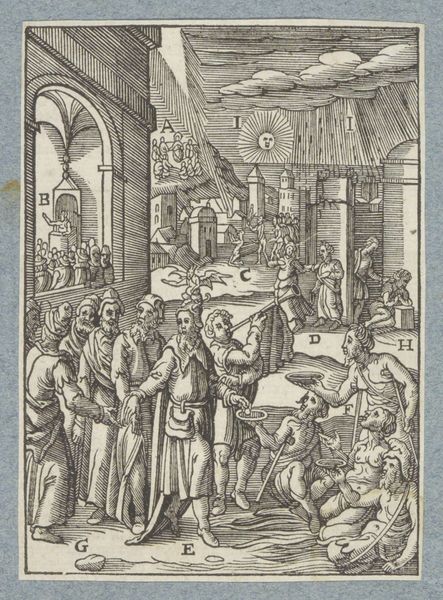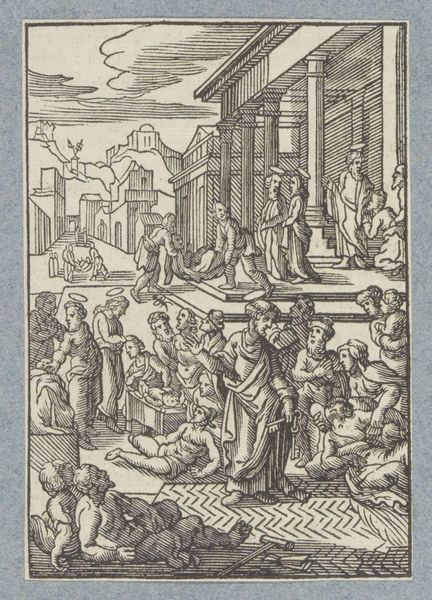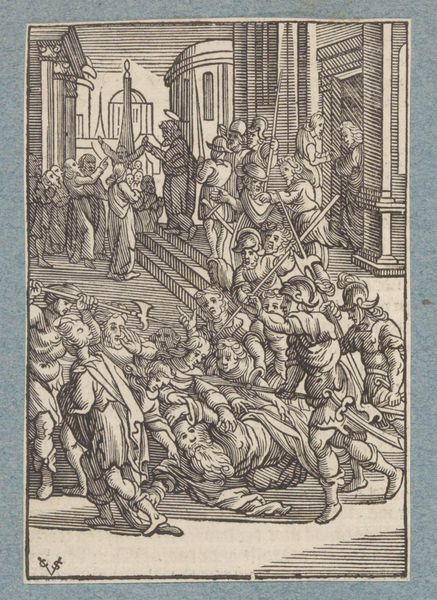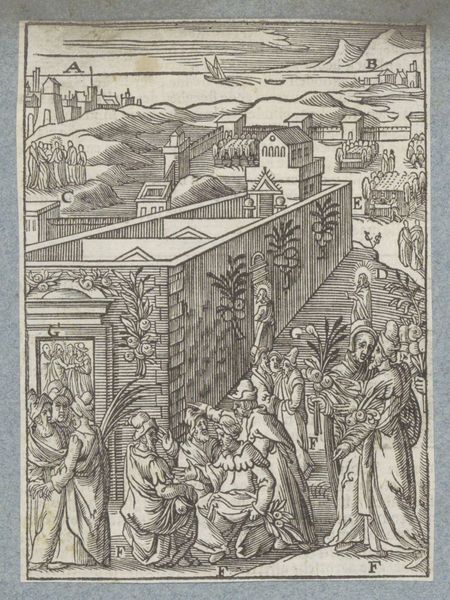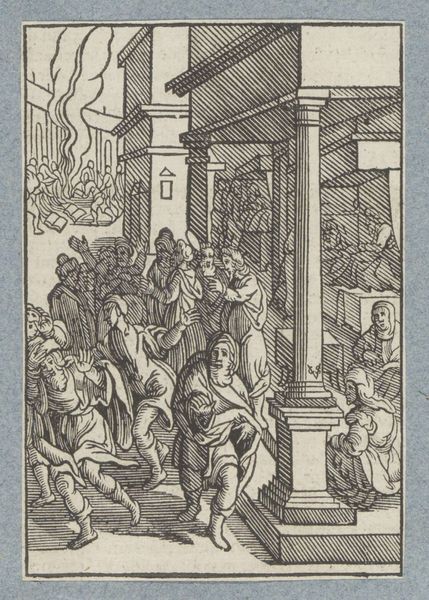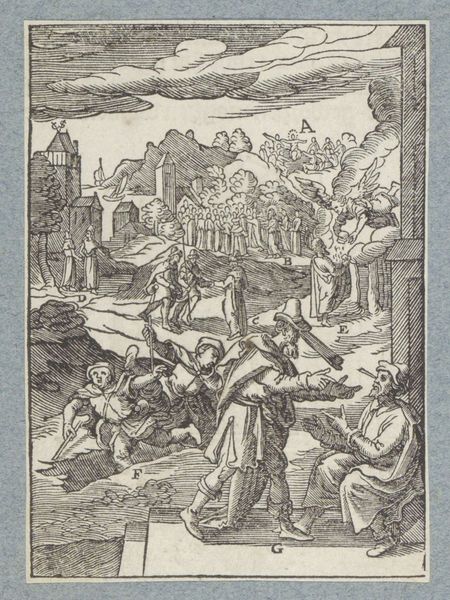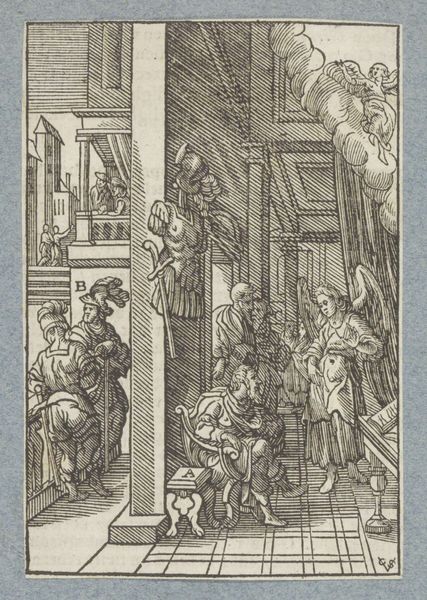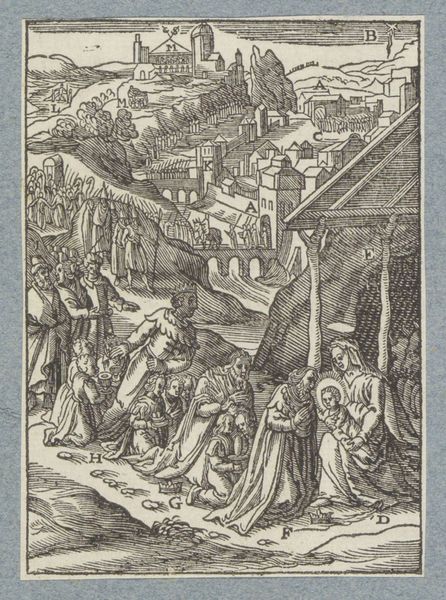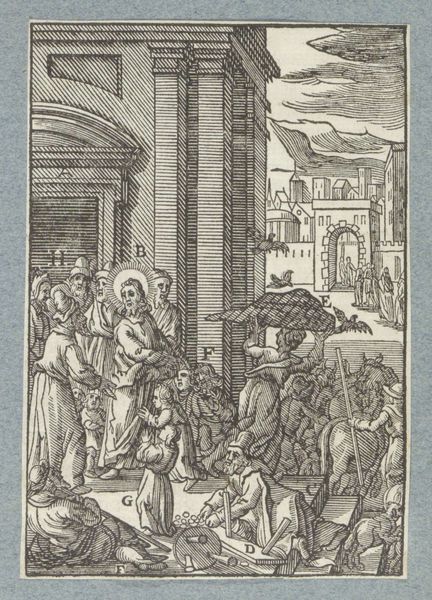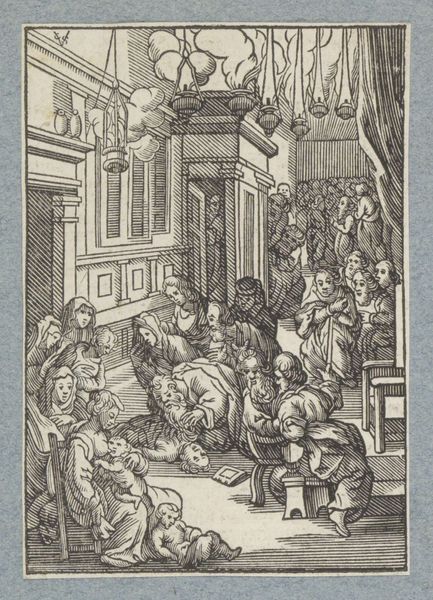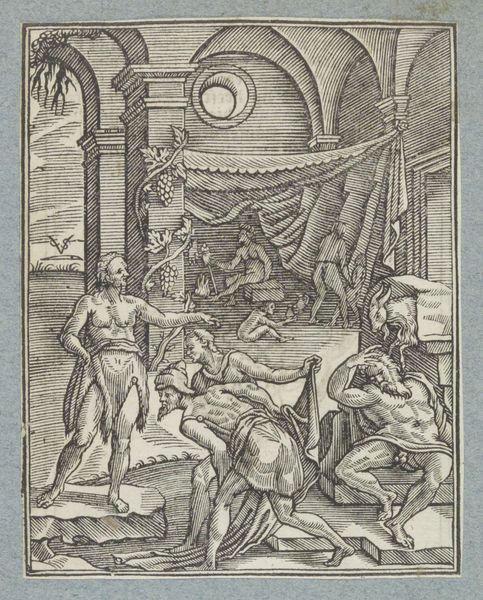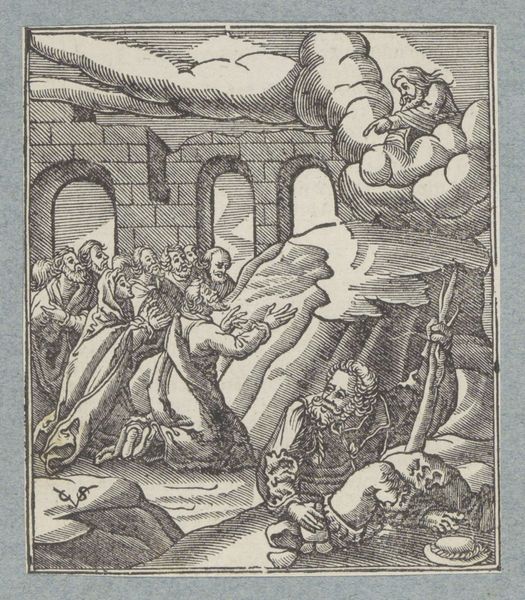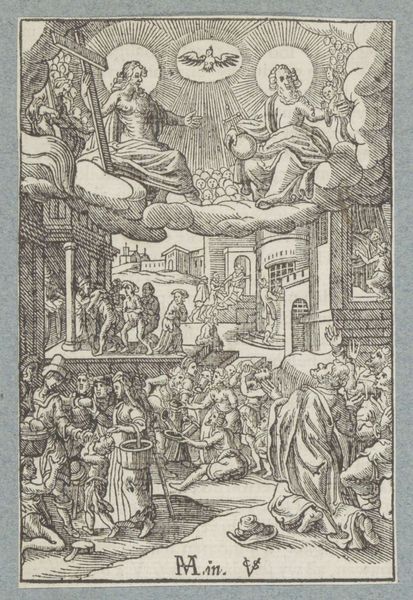
Vergeef ons onze schulden, zoals ook wij hebben vergeven wie ons iets schuldig was before 1646
0:00
0:00
christoffelvaniisichem
Rijksmuseum
drawing, print, ink, engraving
#
drawing
#
medieval
# print
#
ink
#
history-painting
#
engraving
Dimensions: height 113 mm, width 74 mm
Copyright: Rijks Museum: Open Domain
Curator: Here we have a piece titled "Vergeef ons onze schulden, zoals ook wij hebben vergeven wie ons iets schuldig was," translating to "Forgive us our debts, as we also have forgiven those who are indebted to us." It was created before 1646. The artist credited is Christoffel van Sichem II. The medium is an engraving printed with ink. Editor: It’s funny, isn't it? How compact it is, but it hits you with so much chaotic energy. Like everyone’s begging and bartering and canoodling all at once. And then these serene cherubs float above like, "Guys, chill, it's just money!" Curator: Observe how Sichem organizes the composition to underscore contrasting realms. Terrestrial turmoil and supplicating figures occupy the lower register, constructed through tightly packed arrangements and sharp, cross-hatched lines to imply shadow and volume. Editor: Yeah, the ground-level scene is full of frantic gestures. It’s pretty skillful how the artist manages to make the space feel so busy. Is it meant to feel judgmental, though? Is that looming architecture supposed to represent earthly authority looking down? Curator: One might suggest the artist employs linear perspective and architectural elements to construct a narrative framework, not necessarily to prescribe judgement. The figures ascending the steps may imply progression toward grace. The radiant forms floating above reinforce the divine aspect. Note also, the use of symbolic objects, perhaps attributes relating to specific sins or debts, enriching the print’s iconography. Editor: You’re right. It feels more layered than a straightforward condemnation. I find the faces really interesting—each one seems to carry a very specific blend of hope and desperation. But does all this frantic human messiness *really* need angelic supervision? Or a big staircase? Curator: That complexity, perhaps, echoes the human condition within a divine order. It suggests our perpetual need to bridge earthly failings and aspirations of the sublime. Editor: It makes you wonder who we *think* we're fooling when we’re hustling like that, doesn't it? Thanks, that's made me think about it a whole new way. Curator: Precisely! Nuance yields insight, and a close examination reveals the intricate layers woven into its formal structure. A successful analysis, wouldn’t you say?
Comments
No comments
Be the first to comment and join the conversation on the ultimate creative platform.
